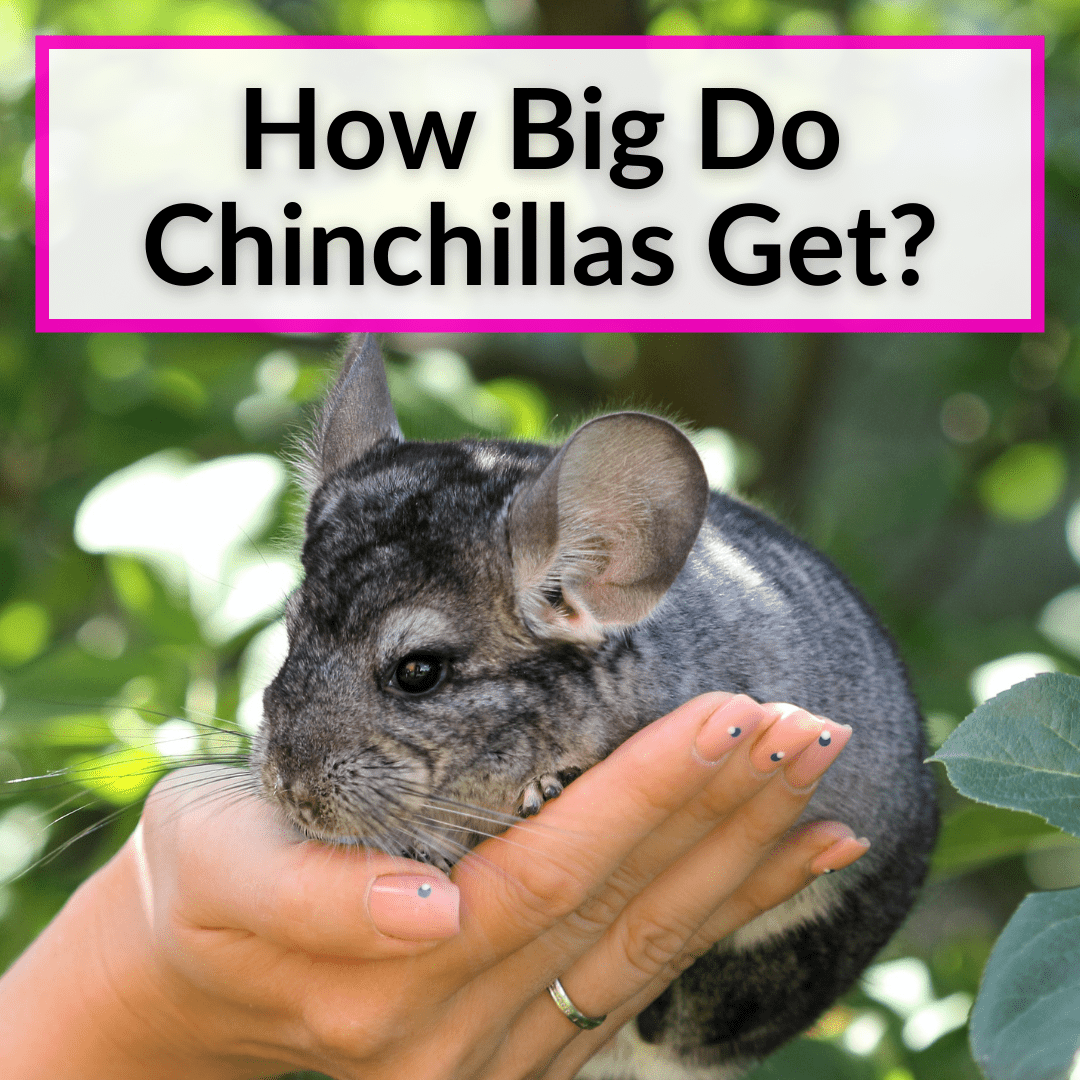
But if you’ve looked at various photos of them online, you’ve probably noticed a considerable size difference from one chin to the next.
There is a reason for that.
You see, there are two different types of chinchillas.
And one grows much bigger than the other
How big does each type of chinchilla grow exactly?
Keep reading to learn just how big a chinchilla gets, along with other vital information about chinchilla growth.
Contents
How Big Do Chinchillas Get?
Full-grown long-tailed chinchillas reach 9 to 15 inches in length and weigh from 0.8 to 1.1 pounds. Short-tailed chinchillas are larger, reaching lengths of 11 to 19 inches and weighing between 2 and 3.2 pounds.
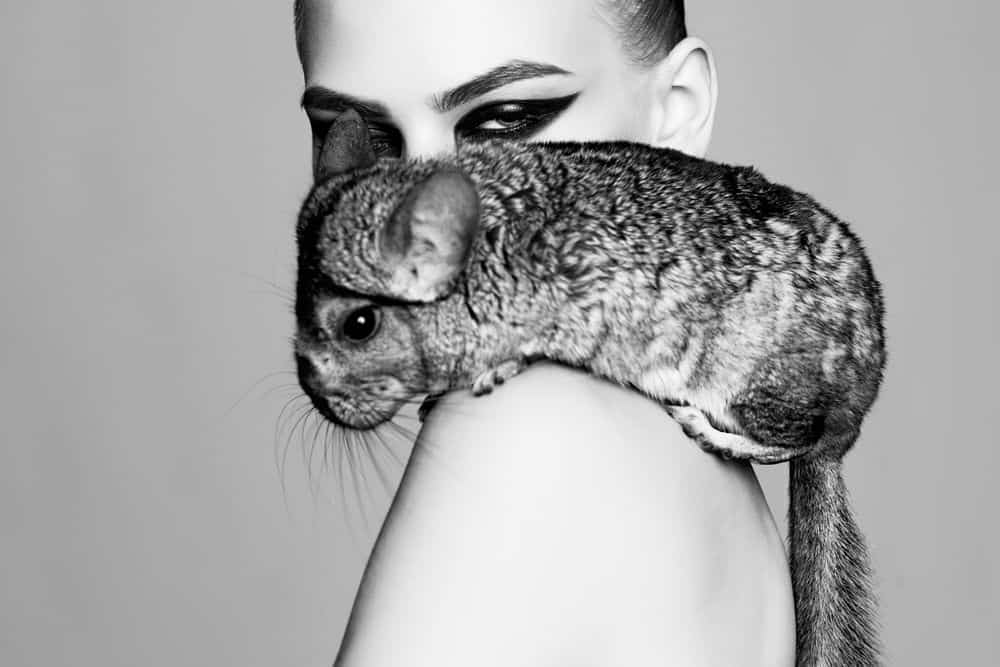
Chinchilla Growth Chart
This table puts the above average size and weight information in an easier-to-read format.
| Type of Chinchilla | Average Length | Average Weight |
|---|---|---|
| Short-Tailed Chinchilla | 11 - 19 Inches | 2 - 3.2 lbs. |
| Long-Tailed Chinchilla | 9 - 15 Inches | 0.9 - 1.1 lbs. |
In addition to explaining how big chinchillas get, I also wanted to answer other frequently asked questions about chinchilla growth and how big you can ultimately expect a chinchilla to grow.
This information will help you provide the best care possible to your chinchilla.
How Tall Are Chinchillas?
Long-tailed chinchillas generally grow to be 4.1 to 6.9 inches (10.5 to 17.5 cm) tall. Short tailed chinchillas can grow to have a height anywhere between 6 and 12 inches (15 to 30 cm) on average.
Full-Grown Chinchilla Size Difference
Chinchillas do not get very big and make for fantastic pets, no matter the type. But as you can see from the table above, there is a considerable size difference between short and long-tailed chinchillas.
Short-tailed chinchillas are typically about ½ a pound heavier than your long-tailed chinchillas and a few inches longer.
It’s rare that a chinchilla exceeds the sizes and weights given above. If yours does, it’s likely that it is overweight and you may need to make a diet change to ensure your chinchilla is consuming the correct nutrients and growing properly.
My chinchilla is just a tad under 1 pound and is fully grown at 5 years old, if this helps give you a better idea of what you are working with.
The fur on a chinchilla can also cause them to appear larger than they really are.
It is one of the reasons people sometimes mishandle chinchillas thinking they are larger, but in reality, their dense fur is soft, and under that fur is a small framed rodent.
How Long Does It Take A Chinchilla To Be Fully Grown?
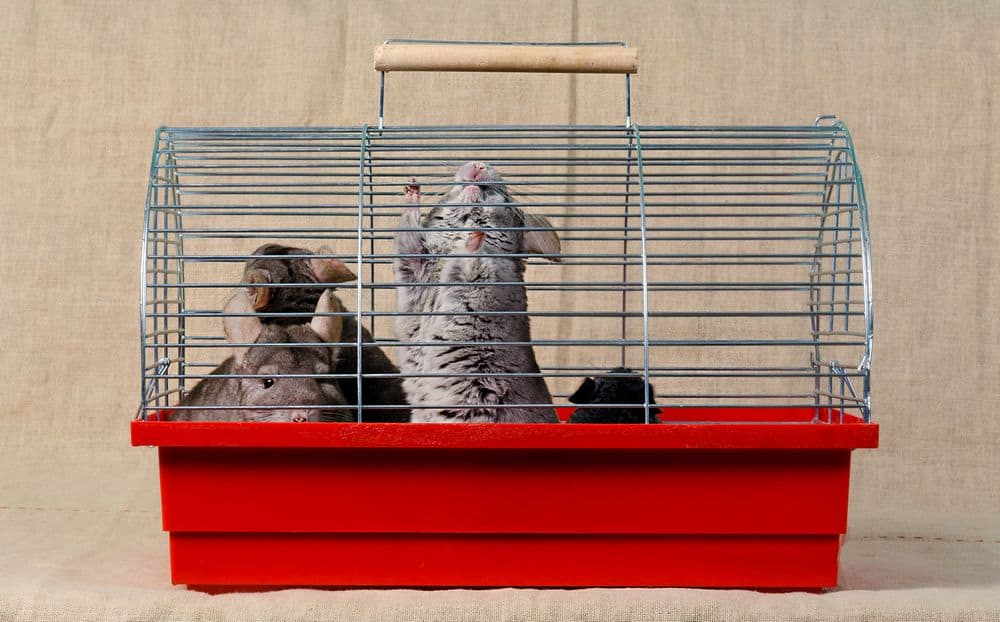
Chinchillas mature and grow quickly. A chinchilla is considered full-grown at 8-months old. Some chinchillas may be slightly delayed on this timeline based on diet and the care they are provided.
Overall, within 1 year of owning a new chinchilla, it should be at max size and as big as it will grow.
Biggest Chinchilla In The World
It is impossible to know the biggest chinchilla in the world, since most live in the wild and are not recorded. That said, there is not even any information about the biggest chinchilla ever recorded. It seems no one is keeping records on this. If you have an overlay large chinchilla, it may not be a bad idea to contact Guinness and see if you can nab a world record.
As for the largest type of chinchilla, they are not exactly pure chinchillas. The so-called giant chinchilla is a breed that was created in the 1920s by breeding chinchillas with Flemish Giant rabbits. Giant chinchillas weigh 12 to 16 pounds. They are great pets, if you are thinking of getting one.
Baby Chinchilla Sizing And Growth
Man, those baby chinchillas are about as cute as it gets. Although small and fragile, they are something to show off to friends a family.
A baby chinchilla is much smaller than a full-grown chinchilla. In general, a baby chinchilla will weigh approximately 25 to 80 grams.
Most of this seems to be from their beautiful and full coats of fur. Throughout the first 8 months, they will continue to grow until they reach their mature body size.
During this time, it is important that you provide them all of the correct nutrients and a balanced diet to ensure they grow and mature properly.
This means they should get nutrients from their mother in the beginning and then slowly transition to pellets and hay.
What Changes As Chinchillas Grow?
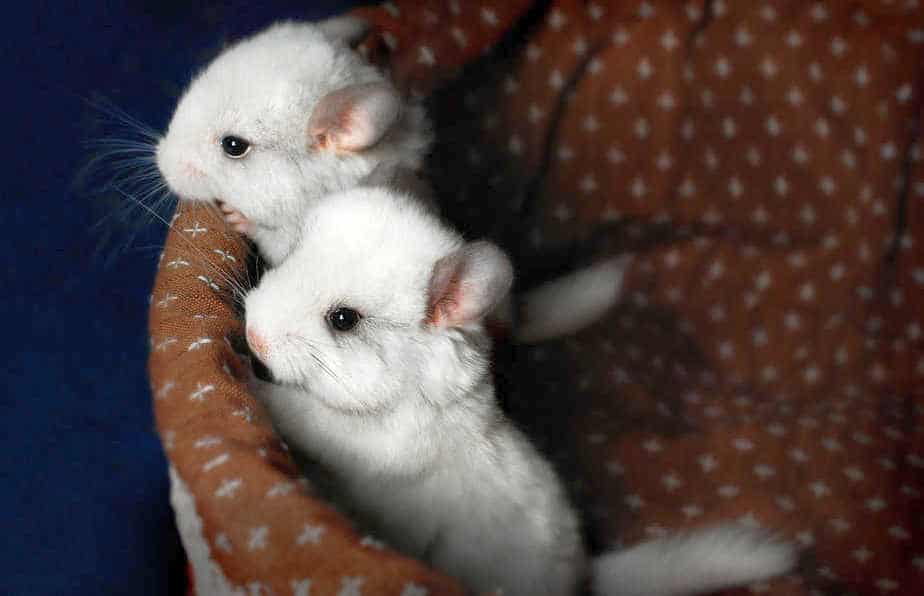
Overall, not much changes as your chinchilla grows and matures. Except in the beginning.
In the early stages, a baby chinchilla still needs to remain with its mother for 6 to 8 weeks. You can read more about chinchilla breeding and reproduction here.
The female chinchilla nurtures her baby chinchillas, also known as “kits”, and ensures they nurse and get the nutrients and care they need for roughly 2 months.
Following this stage, your chinchilla will transition to a regular diet consisting of pellets and timothy hay as mentioned previously.
Once it has switched to this diet, it remains the recommended diet for the rest of its lifespan, which can range from 15 to 20 years.
Provide Adequate Space For Your Chinchilla As It Grows
Now that we know how big a chinchilla gets, how do we make sure they are adequately cared for? The first thing you must do is ensure you are proving a large enough chinchilla cage.
I have a post that you can see here that breaks this down for you in-depth.
I personally am an advocate of the Critter Nation 2 chinchilla cage.
It has dual levels, plenty of space, and allows your chinchilla to maximize its desire to jump and climb on everything. It’s undoubtedly an awesome chinchilla cages to consider.
Outside of this, you need to ensure you keep your chinchilla’s diet in check. Make sure you stick with the recommended chinchilla hay and only use pellets designed explicitly for chinchillas.
Keeping Tabs On Your Chinchilla’s Growth
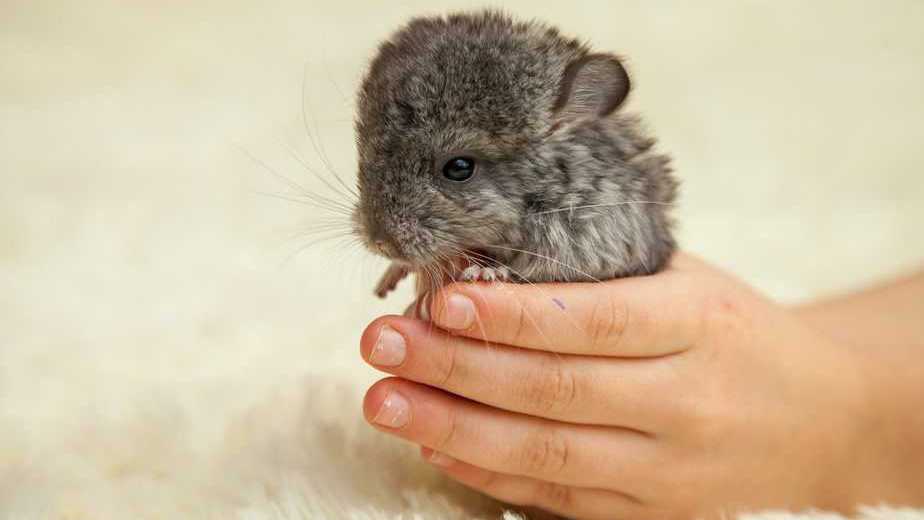
Keeping tabs on your chinchilla’s growth is something that’s recommended, and that should be completed. Luckily, scales exist that are designed to help you weigh your chinchilla.
Use a scale like this digital pet scale from Greater Goods:
Doing so lets you spot fluctuations and potential issues early, before an illness or issue has time to progress further.
A chinchilla becoming overweight or underweight is a real concern to take seriously. Weighing your chinchilla every month or two lets you understand if you have an issue on your hands that you need to deal with.
Simply double-checking makes sure your pet’s weight stays within a reasonable range and you are in great shape. If you do notice any issue, contact a vet as soon as possible, so you can find the root of the problem.
How Big Chinchillas Get: Final Thoughts
I know you arrived here initially for a quick and straightforward answer as to how big a chinchilla will ultimately get.
Hopefully, you got that answer, along with additional insight on what you can expect as your chinchilla grows. I also have another article that covers every aspect of chinchilla appearance.
Apart from their adorable looks, they are friendly and extremely affectionate pets. Take ethical care of them, and they will undoubtedly love you back.
Chili and I wish you the best of luck with your chinchilla’s and the journey you have ahead of you.
Now let’s hear from you.
As always, I want you to chime in and share your insights and knowledge on a topic.
How big did your chinchilla grow?
What other precautions do you take to keep your chinchilla’s growth and weight in check?
What other information can you provide on this topic?
Be sure to share your thoughts, concerns, and stories by dropping a comment below.
As always, Chili and I appreciate you stopping by and reading. We will see you next time!

Mark Zazubec says
It saddens me to say. I just lost my Charlie. I have a lower level part of the house that Charlie would run around in That was a safe area. Well we have these small cubby doors that lead to the underside of the house that contain the sunk pump. In the 2 years we’ve lived there they have never been opened and they are very hard to open. Well somehow they ended up opened while he was at play and he drowned in the sunk pump. I am beyond hard broken. Been crying for 2 days. Needless to say I just bought Charlotte today. She’s white with beige tones and is very pretty. So I am starting the bond process with her.
Josh Martin says
I am so sorry to hear that. Chinchilla proofing can often be more challenging then we think. Chinchillas are clever with their ways to get into odd spaces. Again, very sorry to hear this happened and I wish you the best of luck with Charlotte!